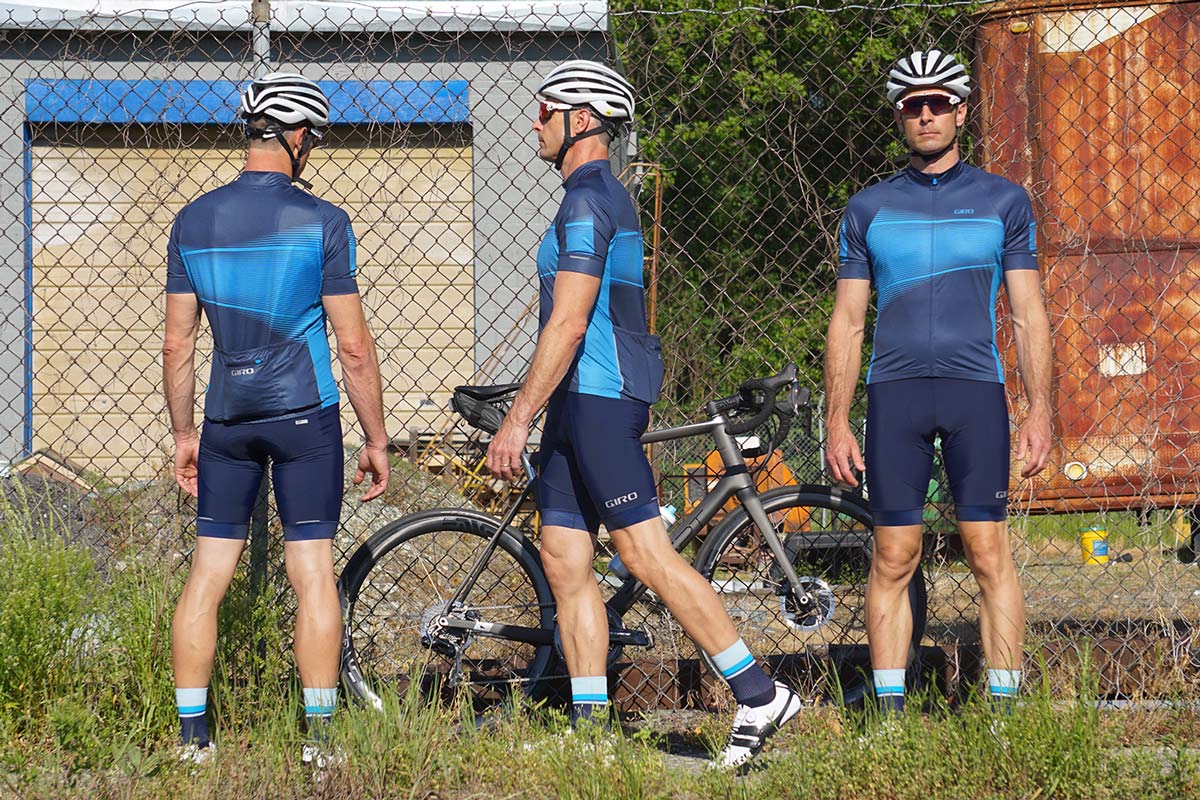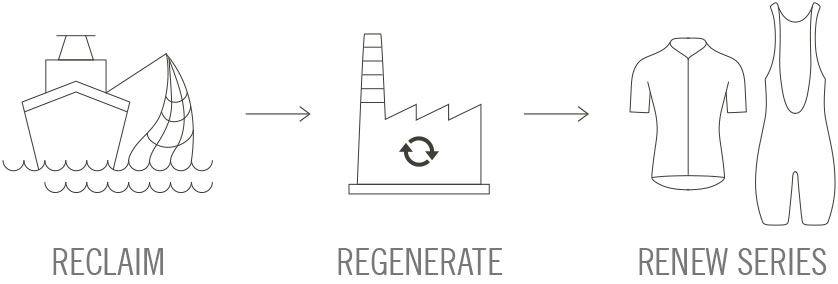We know, there’s no such thing as a stupid question. But there are some questions you might not want to ask your local shop or riding buddies. AASQ is our weekly series where we get to the bottom of your questions – serious or otherwise. Hit the link at the bottom of the post to submit your own question!
When it comes to recycled materials and Giro’s Renew clothing line, there were a lot of great questions. Making clothing out of recycled materials is great – but what does that actually entail? Well, Giro has helped us get to the bottom of many of these questions with the answers below!
Beyond the materials, how is Giro addressing consumer waste through reduction in manufacturing waste, packaging waste, and recycling of retired product which they have manufactured?
Giro: We seek to find solutions to any part of the manufacturing process that creates waste. Our hangtags and packaging for most products have used post-consumer recycled paper and non-toxic inks for years, and we’re currently looking to replace all plastic with a biodegradable solution. Another big component to manufacturing is the impact of transportation – so we’re looking at ways to source products and materials closer to where they are made and end up being sold. Dyeing of materials and the water waste from dyeing contribute a huge amount to manufacturing waste as well, so we are using bluesign® certified materials where possible, since they have strict standard for water waste, etc. while also looking for solutions that use water-free dying. Additionally, many garments use a sublimation-printed color which does not have water waste.
Other than the supposed environmental impact, are there any benefits to the Renew line in terms of performance of the kits/fabrics? Why hasn’t everyone switched to recycled materials by now? – Bill
Giro: The best thing about our Renew Series is that you can expect the same great performance from non-recycled materials. We’re committed to utilizing recycled materials, without losing functionality and performance. Recycled materials are a bit more expensive than virgin materials, but we’ve held our pricing in order to bring a more environmentally-responsible and commercially viable solution to cycling apparel. As for why more brands haven’t attempted this, truthfully, it’s an enormous effort and cost to make this shift. We simply felt that it was the right thing to do and we made it a priority.
Is it cheaper or more expensive to make clothing from recycled materials? – Sarah
Giro: It’s more expensive to make clothing from recycled materials, however we chose to hold our pricing to make sure the product would be accessible and priced right for consumers. Our objective is to create demand in the cycling market for environmentally conscious materials and over time to help be part of a more sustainable industry.
Can the Renew clothing line be recycled again in the future once they’re worn out? – Ron
Giro: We’re working on a full lifecycle program, where consumers can return their garments to then be recycled again at the end of their life and hopefully, this can be a reality within the next couple of years.

Do the pieces in the Renew line contain 100% recycled materials? Or is it a combination of new and old? – Mark
Giro: It’s a combination of new and old, but at least 50% of the garment must be made out of recycled materials to be considered part of the Renew Series. We’re working to replace each and every trim and material with a recycled version and testing the materials to make sure there’s no performance lost. Luckily, recycled materials are getting better and more accessible so we believe a line made completely of recycled materials could be on the horizon. If a garment isn’t made of 50% recycled materials, we still try to get as much recycled content in it as possible, like our upcoming Chrono Alpha Jacket, which will offer insulation made of recycled materials.
What is the carbon footprint of transporting / sourcing this renewable material, and how does it compare to traditional methods? (i.e. where do the materials come from originally, how do they get to the recycling facility, then the factory, etc.) – Alex
How does the environmental impact of using recycled materials compare to the impact of global transport logistics from Asia to the European and North American markets? – John
Giro: Carbon footprint isn’t the only consideration—environmental burden encompasses every aspect of making a product. We all really need to consider the impact on air, water, and land; the energy requirement of the machines used to extract a resource; the footprint of manufacturing and final delivery … Making progress in any and every area is the ideal.
Each material used in the Renew Series comes from the same country of origin as the original non-recycled version we use, so there’s no additional impact added by using the recycled materials. However, transportation is a huge factor in calculating any product’s overall environmental burden, and we’re looking at options for manufacturing our final product closer to where materials are manufactured, and closer to the final consumer to reduce overall impact. This is a key goal over the next two years. Ultimately, reducing the reliance on virgin source materials is incredibly important since they’re often the most intensive when it comes to factoring total burden.
Are you also using renewable energy when recycling and re-manufacturing the fabric? 😉 – Yuval
Giro: Candidly, we are not equipped to speak effectively about the energy source for every factory, component or finished good, especially since this is an area of rapid change across Europe, Asia and the Americas. But we do work with partners that are aligned with our values of improving the sustainability of their product, including the sources that help to generate it.
Why were fishing nets chosen as the material? It seems to be a 100% marketing-driven choice. Fishing nets are non-homogeneous, being from a wide variety of sources and ages, and the composition of nets is highly variable (plus the presence of floats), and thus not conducive to efficient recycling. Whereas water bottles are pretty much all polyethylene terephthalate. – Jessa
Giro: Water bottles are a great solution for polyester, however, fishing nets provide nylon, a totally different fiber. We use both because we use both material types for different products (for example, we use polyester in jerseys because it’s faster drying and we can print on it, and we use nylon for shorts and bibs because it’s more durable). In addition to using fishing nets to source recycled nylon, we also use pre-consumer waste, such as discarded thread which is readily available. What’s great about being able to recycle the pre-consumer waste is that this type of waste never became a usable product in the first place and would have been completely discarded.

It seems like brands like Repreve are already doing a lot of the legwork when it comes to recycled performance fabrics. Why not partner with them? How do the Renew Series fabrics differ from those from Repreve? – Pete
Giro: We’ve partnered with Aquafil (a similar brand). They’re doing great work in finding environmentally responsible solutions for material manufacturing. We also value the work bluesign® has done to certify more sustainable practices in our industry, which has helped us find best-in-class material partners to work with. We are open to any material or brand that is making progress and will continue to look for partners as we grow the Renew Series. Repreve could certainly be part of that for us in the future.
Please name a municipal recycling system in the US that is not operated at a loss. The recycling industry seems to be subsidized by municipal recycling systems which are operated at a loss through tax monies. Recycling, except for a few materials, seems to a net energy negative for the environment. – Jessa
Giro: We are not experts in the field of municipal economics or tax policy, so we can’t answer this. Sorry.
How does Giro address any issues labor conditions in their production facilities particularly in facilities where they do not directly have employees or facilities they do not own?
Giro: We work very closely with our manufacturing partners and have employees in each country where we manufacture to make sure our labor standards are being met. Further, our factories are audited by our Asia-based Quality Engineering staff prior to doing any business with them.
How does Giro see their corporate leadership steering the company during these volatile political times?
Giro: With a clear focus on customers, as always.
Does Giro see any conflict with their own corporate and company culture and that of their parent company?
Giro is a small part of a much larger family of brands, which means that we are surrounded by different points of view and different cultures. Diversity is something that we embrace, and see as an essential part of living well and doing good work.
Got a question of your own? Click here to use the AASQ form and submit your own question!

